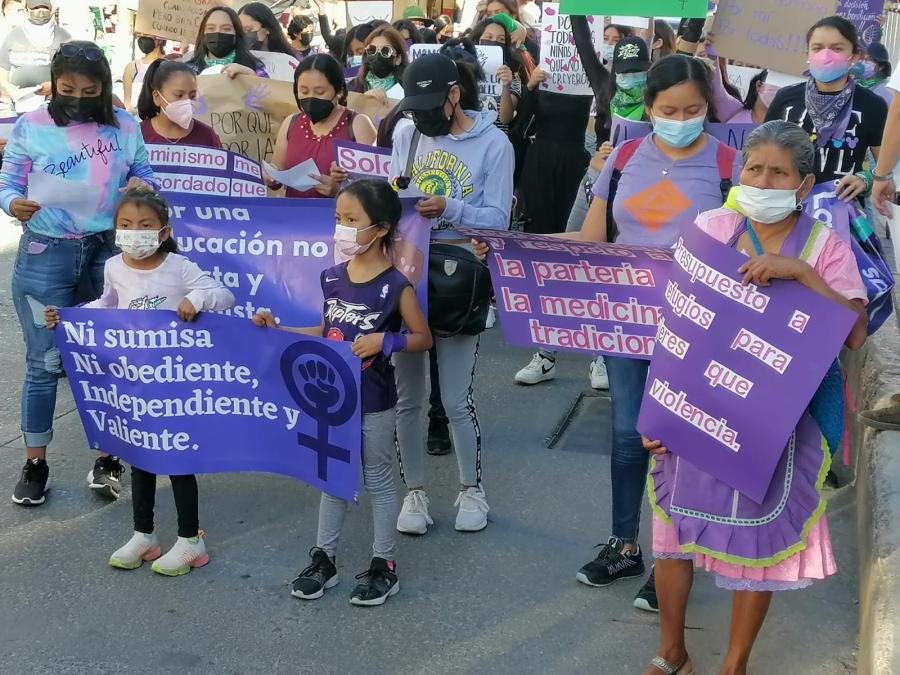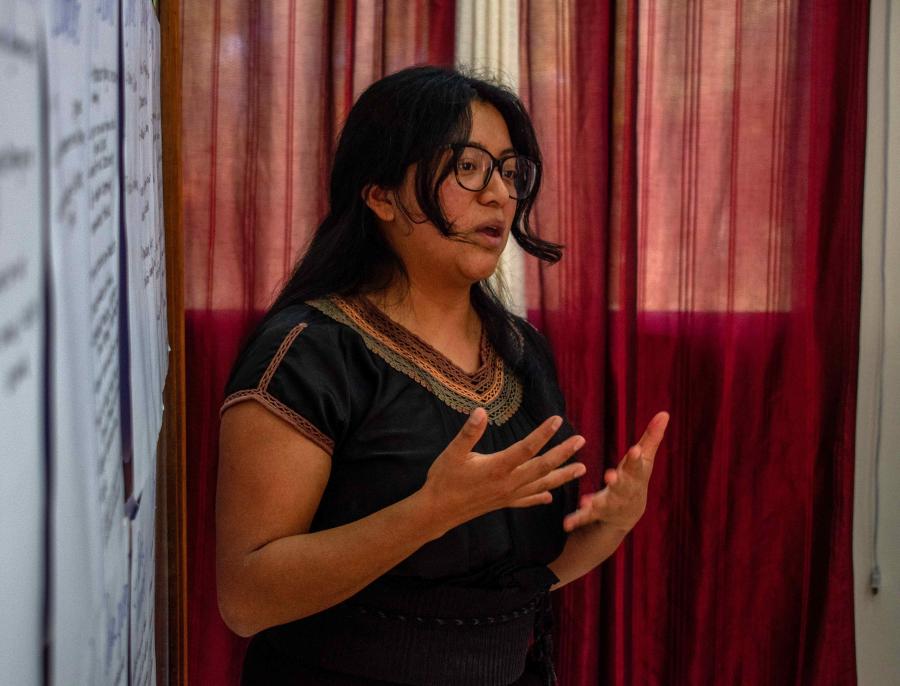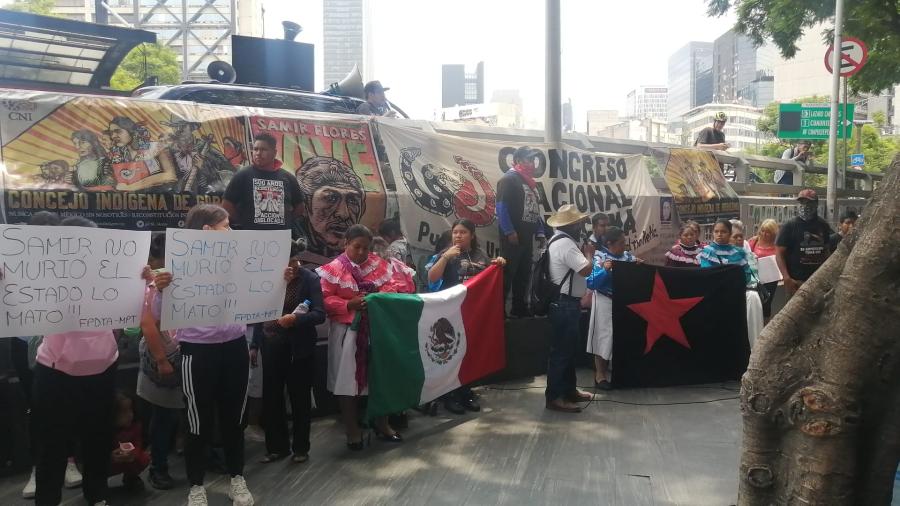
By Reynaldo A. Morales and Diana K. Elhard
The links between climate change, food systems, and biodiversity protection are clear from the lived experiences of Indigenous Peoples and their diverse knowledge systems. As the upcoming United Nations Framework Convention on Climate Change (UNFCCC) COP28 faces the challenge of including Indigenous Peoples’ environmental stewardship and community-based policy contributions, ancestral Maya organizations and farmers in Campeche, Mexico offer a variety of potential solutions rooted in the affirmation of collective rights and leadership roles that honor the urgency of the action needed for the continuation of life on our planet.
A 2019 Intergovernmental Science-Policy Platform on Biodiversity and Ecosystem Services report warned that around 1 million species of plants and animals are threatened with extinction, many within mere decades. It concluded that land degradation has reduced the productivity of 23 percent of the global land surface and that up to $577 billion in global crops are at risk annually from pollinator loss. An additional 100-300 million people are at increased risk of floods and hurricanes because of loss of coastal habitats and the protection they offer.
Contemporary, effective methods of land and water management rely on a combination of information from Traditional Knowledge, western science, and diverse local knowledge systems. The use of Indigenous knowledge systems is intrinsically linked to local languages in multiple areas of adaptation, mitigation, and resilience, and is directly relevant to conservation and the sustainable use of biodiversity. Independent bodies of local, Traditional Knowledge across the planet have been sustained for millennia through local community networks.
Alvaro Mena.
Our host, Alvaro Mena, a young Maya seed keeper in Hopelchen, Mexico, supports the confluence of regional Maya cooperatives representing the surviving Mayan governance systems. The Mayan word Hopelchen means “Place of the five wells,” referring to five centrally located wells that provided water to the area’s original Maya communities. Many towns’ traditional names in the region are associated with the uses of immense underground water reservoirs and their management across the entire Campeche region. However, today Maya people’s access to such wells is prohibited by the same regional authorities who have authorized Mennonite farmers to control the extraction and use of water resources—a control that was previously in the hands of the Indigenous communities in Hopelchen.
Today, Maya social and cultural values exist hand in hand with the return to the ancestral relation with the land and the preservation of their vibrant language, rescued from extinction and rooted in the memory of ancestors and ancient practices. In Mayan epistemologies, the seeds and multidimensional beings from their ecosystems remain integral parts of their interconnected kinship networks. The organization Ka’ Kuxtal Much' Meyaj, which translates to “reborn in collective work,” proclaims themselves to be beings of corn, squash, peppers, tomatoes, yucca, sweet potato, and representatives of dozens of other seeds. Sustaining this relationship is their central objective.
Since 2010, 24 Maya men and women from 12 communities from the Chenes region have mobilized to create new legal organizations. Many of the place names of these localities share the same relation with the root word “Chen,” which in the Maya language means “well:” Bolonchén, Sahcabchén, Komchén, Pakchén, Hopelchen, Dzibalchén, Chencoh, Cancabchén (in Campeche) and Yaxhachén (in Yucatán). Their territories, located along the border of Campeche and Yucatan across the northeast and southwest parts of Quintana Roo state, are located at the heights of the Yucatan Peninsula plate, with Hopelchen as one of its most important villages.
As Maya Peoples’ place-based relationships have developed through their milpas, Ka Kuxtal decided to focus on the defense and rescue of native corn, and from there build the educational, productivity-related, and organizational conditions toward the construction of a larger governance framework of self-determination and autonomy. They started with native seed festivals as spaces to exchange and promote native seeds and discuss the conservation of the milpa’s sowing system, as well as a space to discuss community issues.
Ka Kuxtal, as a model of Maya organization, centered their efforts on developing their own model of agroecology and conservation tied to the defense of their territory, the affirmation of their rights and spirituality, decision-making processes, and economic autonomy via cooperatives, local communication, and educational systems. Ka Kuxtal currently works with 17 communities in the region, promoting community organization and calling for the defense of seeds and territory.
Deep Water Struggles
We traveled to three communities across the Chenes localities of Dzibanche, Bolonchen, and Chencoh, meeting Maya Elders Leocadia, Feliciano, and Decelio, who specialize in native seeds for food, health, and a diverse form of agriculture based on plant communities. In Dzibalchen, driving through the fields, Leocadia showed us her former home inside a dense jungle within a forest clearing in which there were once four homes, along with two ancestral wells her father had rebuilt. She said that neither of these wells bring any good water anymore; her brothers abandoned them after the latest water testing revealed traces of contamination from agrochemicals that they have never used.
Doña Leocadia, Mayan community leader of Kakuxtal Seed Keepers organization and cooperatives in Dzibalchen. Maya Milpas consist of diverse crops and plant communities maintained by resilient uses of underground water. Water is the most important issue for this region of complex ancestral wells, developed by Mayan Peoples.
Leocadia then walked around to show us important places from her childhood. “This is the place where I sat to think about the future,” she said, pointing to a rounded carved stone that was used in a kitchen, looking out at the deep, untouched woods. “I used to have my hammock here. There was a jungle tiger who used to sleep near me in that clearing, behind this place, guarding my sleep for many years.”
Days later, out in the fields of the adjacent Maya community of Sahcabchén, Elder Decelio took us through his family milpa, which he had expanded to the elevated point where he discovered four ancestral wells hidden in the jungle that covered the hill. Maya communities have sustained an agricultural design called milpas, based on a high diversity of the crops interacting as plant communities and an ancestral worldview where animals and all living beings had important roles. “After the total flooding in 2019, all these had become immense lakes that submerged forests and fields. We are still coming back… people had to be evacuated in boats,” he said as we walked up the hill. “Once the fields were cleared, the animals took all my crops— birds and forest pigs and small animals. I lost my entire cosecha (harvest) of the year.”
Don Decelio’s milpa is devoted to the restoration of traditional plants. He devotes 20 percent of these crops to the adjacent forest wildlife.
After that, Decelio said he decided to speak to the animals of the forest adjacent to his milpa. As he paused and gazed around the lines that separate the Maya forests from the agriculturally developed grounds down the valley, he spoke about how he coexists with the many deer, jaguars, birds, and small animals that dwell in the vast forests. “I had a serious talk with them: ‘If my harvest gets eaten by you, then this doesn’t work for anybody, and neither you nor I will have food. This is not working. We must support each other!’”
Don Decelio.
“Since then,” Decelio said, “everything has improved. I decided to reserve 20 percent of diverse plot just for the animals from the forest and the birds. I will not touch that plot at all. They know that I will not harvest there. It seems we have reached an agreement. I expect to do my harvest normally this time.” Decelio said that the old Maya stories told by other Elders about his People’s relationship with animals and insects from time immemorial suddenly made sense to him, and he decided to remember that day forever. He clarified that there were no ritualistic or religious performances involved in his communication with the animals from the forest. “I treat them as peers,” he said.
Don Decelio.
The connections between biodiversity and climate change and the roles and rights of Indigenous communities in establishing environmental governance have been a clear commitment for communities, and are increasingly acknowledged by UNFCCC and CBD policies. The Maya Chenes Peoples of Campeche across the Yucatan Peninsula encapsulate the challenges and contributions of many Indigenous Peoples and local communities to the planet. Their contributions to agrobiodiversity conservation and food security have global relevance.
Feliciano clarified that the diversified crops that Decelio has been determined to maintain and preserve within his milpa are part of a new project of developing exclusive crops with only traditional Maya seeds and wild crop relatives. Ka Kuxtal has embraced this endeavor as central to their biocultural restoration project. In the meantime, across the Yucatan Peninsula, the Maya Train megaproject continues, creating deforestation and unstoppable infrastructure development across Maya communities. “Right now, we are experiencing a new invasion. This is a historic moment in the Yucatan Peninsula,” Mena said, calling attention to the importance of supporting the restoration of Indigenous Peoples’ territorial and environmental governance.
Reynaldo A. Morales is Assistant Professor at Northwestern University Medill School of Journalism, Media, and Integrated Marketing Communications. He is also a Faculty Fellow at the Buffett Institute for Global Affairs. Diana K. Elhard is a Political Science doctoral candidate at Northwestern University.
Top photo: Traditional Melipona Bee hives from Dzibalchen. Melipona Bees have been the key ancestral pollinator in the region. Its extinction risk brings concern for the future of agriculture in the Yucatan Peninsula.



